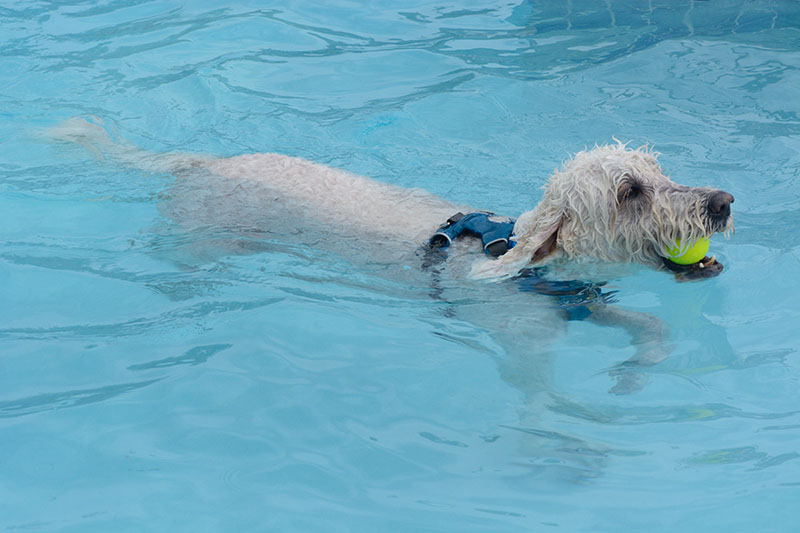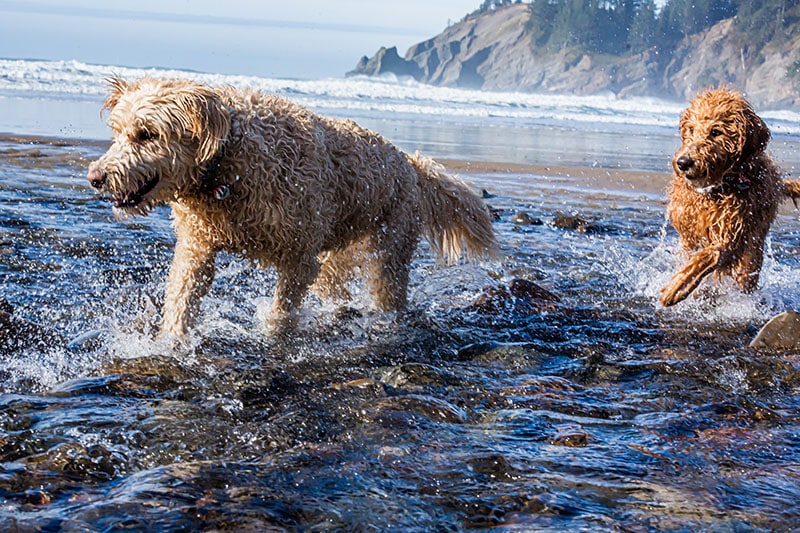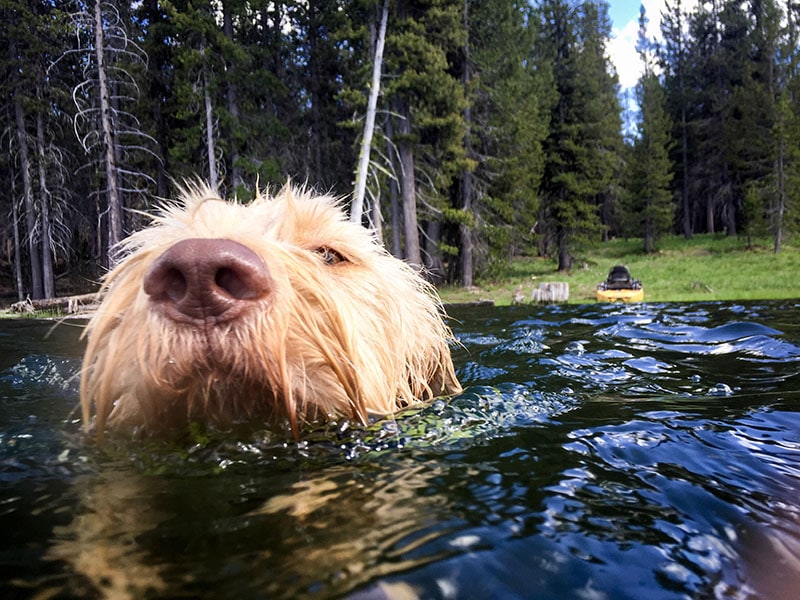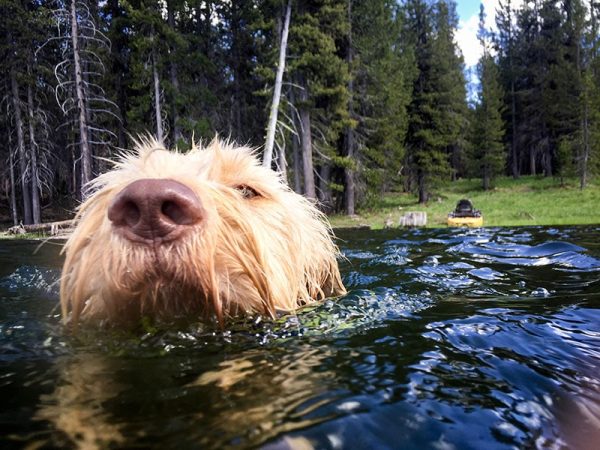Labradoodles are the ideal combination of the intelligent Poodle and the up-for-anything Labrador Retriever, right down to their swimming ability. Most Labradoodles are exceptional swimmers, especially if they’re given the right training and encouragement.
Are Labradoodles Natural Swimmers?
Labradoodles got a natural swimming ability from not one but both of their bloodline. Labrador Retrievers are known to enjoy the water and are bred to retrieve ducks from ponds or lakes during a hunt.
Poodles may have a reputation for being sophisticated and polished, especially with their fancy haircuts, but they were bred to hunt and retrieve—including water retrieving. They have a moisture-resistant coat and webbed feet, which help them swim well naturally.
With these strong genes on both sides, most Labradoodles love the water, whether it’s a stream, pond, or your backyard pool.
Do All Labradoodles Like Water?
Being from two water-loving breeds, it’s likely that a Labradoodle puppy will like the water more than the average dog. It’s not a guarantee, however.
How much your dog likes the water depends on how early it’s introduced to swimming and how positive the experience was. If your dog is forced or scared into swimming, it may have an aversion to water for the rest of its life.

How to Introduce a Labradoodle to Water
The easiest way to acclimate a Labradoodle to water is when it’s a puppy. As long as the experience is positive during this impressionable time, you’re more likely to have an adult dog that looks for opportunities to swim.
It’s important to start slow. Add a few inches of water to a bathtub and place your puppy in the bath. Don’t get into full bathing and shampooing yet. Keep the experience fun and playful with treats, toys, and lots of praise. You can slowly increase the amount of water in the tub to let your pup adjust to it gradually.
Taking the Next Step: Swimming!
Your Labradoodle may love splashing in the tub, but it’s a different experience when it’s swimming in a larger body of water, especially if its feet don’t touch the bottom. Not all dogs understand the mechanics of swimming naturally, even if they’re bred for it.
If you have a nearby dog-friendly pond, lake, or beach, that’s a good place to start. If not, get a deep hard-shelled kiddie pool that you can fill up enough for your dog to experience deeper water. Like the tub, let your dog set the pace a little bit.
Water Safety for Labradoodles
With luck, your Labradoodle will take to water like a duck. But no matter how strong and natural a swimmer you have, the wrong conditions can overpower the most athletic of dogs.
When you take your dog to a natural body of water, make sure you know the entry and exit points. It’s best if your dog can get in and out on its own to avoid becoming overwhelmed. Once you find these spots, guide your dog in and out a few times so it understands how to leave the water.
If you have an overzealous puppy, an older dog, or a dog with mobility issues, it’s important to enforce some breaks to ensure your dog doesn’t become exhausted. You may want to invest in a dog life jacket for additional safety and peace of mind.
Never allow your dog to swim unsupervised, whether it’s the ocean or a backyard pool. Dogs can lose their bearings easily, especially when they’re submerged, and forget how to get out of the water.
There are other hazards to be aware of, such as:
- Dangerous sea life like jellyfish
- Strong currents
- Fishing equipment or garbage that can cause injury, such as fish hooks or broken glass
- Depending on the region, aquatic predators like alligators
- Algae blooms or other water quality issues
If you wouldn’t get in the water yourself, it’s best that you don’t allow your dog in the water either.
Once you’re done swimming, be sure to rinse your dog thoroughly to remove sand, dirt, bacteria, and aquatic hitchhikers. If necessary, give your dog a quick bath.

What If My Dog Doesn’t Like to Swim?
Most Labradoodles will like swimming, but that doesn’t mean yours will. If you take it slow and ensure every experience is fun and positive, your dog is more likely to enjoy it.
Still, some dogs just don’t like it, no matter how patient you are with the training process. It’s possible your dog had a bad experience in the past that you need to work through, or it simply doesn’t enjoy swimming. Either way, don’t push your dog too hard—it may learn to love swimming after some good experiences.
Summary
With two water dogs as parent breeds, Labradoodles typically love to swim. With time and patience, you can have fun water experiences with your dog that can grow into an adult Labradoodle that swims like a fish.
Featured Image Credit: Carrie Epley, Shutterstock










